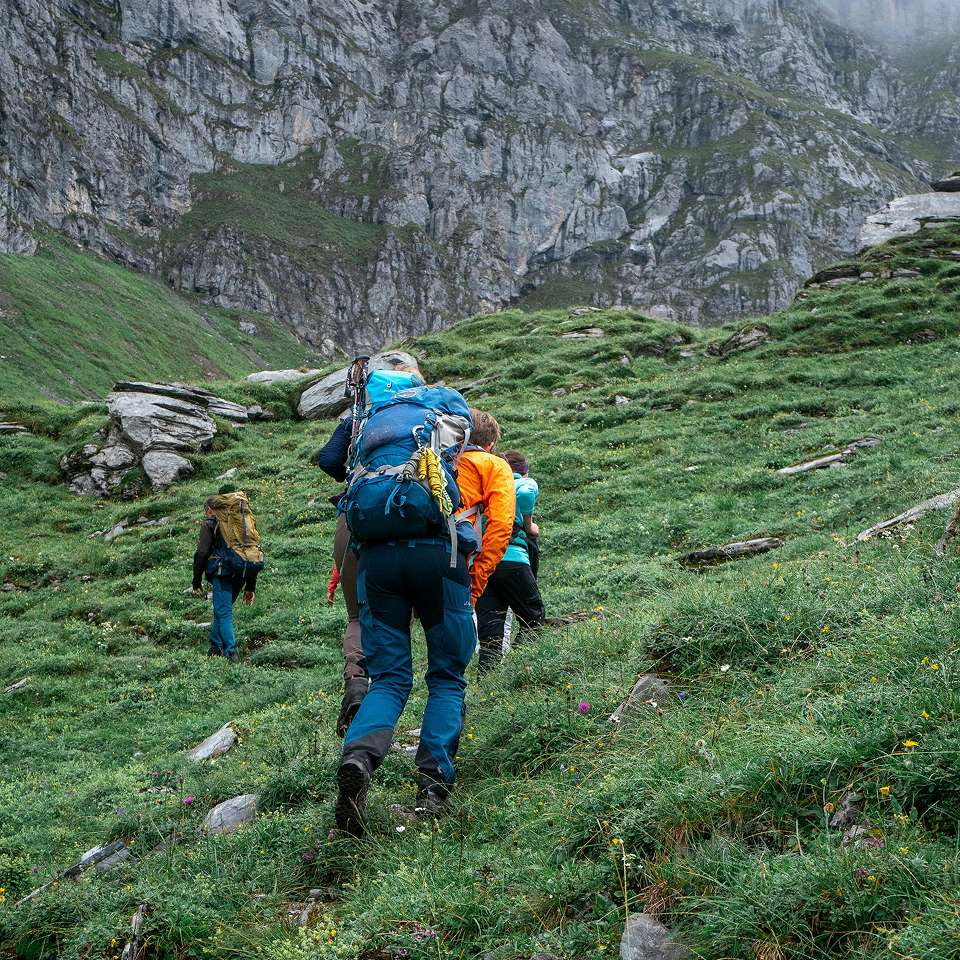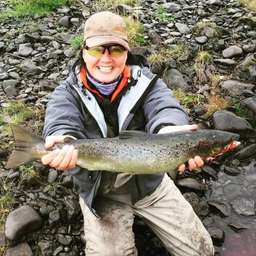- Home
- Europe Tours
- Iceland Tours
- Iceland Travel Guides
- When to Visit Iceland
When to Visit Iceland
Read the below travel guides to find the best time to visit Iceland.

Iceland in November: Winter Weather, Tips, and More
November is when winter officially starts in Iceland. The “Land of Ice and Fire” is bejeweled with pristine icy terrains during this time. From ice caving in Katla to skiing in Seljalandsdalur to embarking on an Iceland Northern Lights tour in Jokulsarlon, there are plenty of activities to partake in. If you are someone who craves adventure in a tranquil setting, then a trip to Iceland in November is a must. Just remember to wrap up warm and pay heed to the weather forecast and local travel advisory.

Iceland in October: Weather and Outdoor Adventures
October marks the transition period in Iceland when the warm summer temperatures gradually make way for colder winter conditions. This is the time when mountain trails in some parts of the country start closing off, but opportunities still abound for several fun and exciting activities. Go kayaking in Jokulsarlon Glacier Lagoon, chase the Northern Lights, or take a road trip along Route 1 or the Ring Road. A trip to Iceland in October offers both summer and winter attractions.

Iceland in August: Weather, Tips, and More
August is one of the best months to tour Iceland. Officially, in the month of summer, August’s weather is nothing less than glorious. Warm days with plenty of sunshine are perfect for enjoying Iceland’s beautiful landscapes, from summiting its volcanic peaks and hiking over glaciers to visiting national parks and cruising along the country’s rugged coastline. If you are lucky, you might even spot the first Northern Lights of the season, especially in the latter half of the month.

Iceland in July: Weather, Outdoor Adventures, and More
July falls right in the middle of Iceland’s summer, and it is one of the best times to visit the country. The days are warm and long, and every nook and cranny of the country is open for exploration. From whale-watching to hiking to attending summer music festivals to diving in the Silfra fissure between two tectonic plates, a trip to Iceland in July makes for an unforgettable peak season holiday experience for travelers.

Iceland in June: Sunny Weather, Hiking Season, and More!
June marks the beginning of all things exciting in Iceland. It is the first summer month, the start of peak tourist season, and the month when you can witness the midnight sun phenomenon. June is when days are long — the longest in the year, and the countryside is in full bloom. The mountain paths that had been closed for winter are fully accessible now as the winter snow has fully melted off. The weather in June makes it the perfect time to spot wildlife, including whales, seals, and the famous puffin. A trip to Iceland in June is filled with many wonderful things to see and experience, making it the ideal time to visit this Nordic country.

Iceland in May: Spring Weather, Scenery and More!
May is a lovely time to tour Iceland. Winter is long over, but it is not quite summer yet, which means pleasant spring weather conditions. Since most of the winter snow has melted by May, many of the country’s inaccessible mountain paths are open, allowing you to explore the outdoors and visit all corners of this country. From whale-watching and hiking to delightful trips on roads and trails, there are many wonderful things to do in Iceland during this month.

Iceland in December: Weather, Hot Springs and More!
Uncover the wonders of Iceland in December! Although one of the coldest and darkest months, it's prime time to chase the Northern Lights and soak up the festive Christmas vibes. With snow blanketing the landscapes and the sun making a brief appearance, the holiday spirit trumps the chilly weather. Bundle up for icy adventures in Vatnajokull, explore the frozen waterfalls of the North, and soak in the geothermal hot springs of the South. Reykjavik dazzles with festive lights, and the iconic Golden Circle is a must-see. Embrace the chill, chase the auroras, and make your Iceland tour in winter unforgettable.

Iceland in April: Cheaper Rates, Longer Days and More!
Iceland really has just two seasons — winter and winter-lite. The weather in Iceland in April can be best described as a transition between winter and Icelandic spring or simply winter-lite. Though Iceland’s weather in April is still cold, days are long, and the whole country finally starts stepping out to enjoy the outdoors. Therefore, if you are off to an Iceland trip in April, you will be spoiled for choice regarding activities and destinations. You can plan a road trip to take you past stunning scenery, go whale-watching and horseback-riding, dip in a natural hot spring, and enjoy Reykjavik’s culture and art scene.

Iceland in March: Weather, Tips & Northern Lights
Although it is cold in Iceland in March, this month does not fall under the country’s peak winter season. Therefore, there are lots of things to do on your Iceland trip in winter, from participating in unique festivals and events and exploring stunning ice caves to taking a dip in the healing waters of natural hot springs, embarking on an Iceland Northern Lights tour, and going on whale-watching tours. In addition to this, Iceland’s weather in March is chilly, and the country receives few travelers during this time, allowing you to take advantage of off-season rates.

Iceland in February: Weather, Tips & Icey Adventure
While it is true that Iceland in February is cold and snowy, with short, dark days, the country is no colder than some of its neighbors in northern Europe. And, despite the weather, there are many exciting things to do in Iceland during this time.Top on the list of most travelers heading for an Iceland tour in February is the magical Northern Lights. In addition to this, February is also a great time to enjoy indoor attractions (like the museums of Reykjavik) without too many tourists around, explore some of the country’s ice caves, and take a dip in the healing waters of a natural hot spring.

Best Time to Visit Iceland
Ideally, the best time to visit Iceland is during the summer, which falls between June and August. It is when all the roads are open, and the weather is stable. However, picking the best time to visit largely depends on your preferences and the experiences you want. If you are traveling to Iceland to see the Northern Lights, October and April are the best months to visit. If you are planning a trip to Iceland for whale watching, the best time to visit is between April and late September. And if you are visiting Iceland to see the winter wonders, such as glaciers and geothermal spas, the ideal time to visit is between November and March.Read on for more details on the best time to travel to Iceland.

Iceland in January: Hot Springs in Cold Weather
Touring Iceland in January is like stepping into a snowy fairy tale. Despite being one of Iceland's darkest and chilliest months, January's charm lies in snow-covered landscapes and the festive spirit lingering from Christmas. Days are short, and temperatures are cold, but the Northern Lights put on a dazzling show. Bundle up for the chill and dive into Reykjavik's cozy pubs before gearing up for adventures to frosty landscapes. Experience the ethereal beauty of frozen waterfalls and volcanic wonders on the Golden Circle without the holiday season crowds.

Iceland in September: Weather and Autumn Colors
Iceland in September promises an experience that combines the charm of seasonal change and unique cultural offerings. Visitors are greeted with delightful sunny days and the vibrant hues of fall foliage as the country gracefully transitions from summer to autumn. Snow is visible only on the highest peaks, and most roads are open, making this stunning country easy to navigate. The highlights of September include the annual Rettir, a tradition that witnesses the return of sheep from the highlands, and the beginning of the Northern Lights season. A trip to Iceland in September also ensures a more serene atmosphere, with fewer crowds than in the bustling summer months.

Iceland in Summer: Weather and Top Destinations
Iceland is fully open for travel during its summer, which extends from June to August. Whether you wish to hike to thundering waterfalls like Skógafoss and Seljalandsfoss, soak in hot springs such as the Blue Lagoon or Mývatn Nature Baths, or explore iconic glaciers like Vatnajökull and Langjökull, the moderate summer temperature and long daylight hours will surely make your Iceland trip more enjoyable.In this guide, we will break down a typical summer in this Nordic nation, covering everything from the weather to the things to do in Iceland, including both popular destinations like the Golden Circle and Reykjavík, as well as off-the-beaten-path locations.

Iceland in Winter: Weather, Places to Visit, and More!
Iceland maintains a chilly climate throughout the year, primarily due to its high altitude and the cold winds originating from the North Pole. So the allure of a trip to Iceland in winter lies more in the exclusive encounters and adventures that the season unveils than the climate itself. With the arrival of winter towards mid-November, Iceland undergoes a breathtaking transformation. The land of fire and ice becomes a symphony of contrasts where icy landscapes and geothermal wonders co-exist. The country’s major attraction, the Iceland Northern Lights tour, is best done in this cold season, given the longer nights and clear skies. Nature enthusiasts can delve into ice cave mysteries hidden beneath glaciers like the Jokulsarlon Glacier Lagoon. For the daring, snowmobiling in North Iceland’s ski resorts and skating in frozen lakes including Lake Myvatn are exhilarating options. Meanwhile, those seeking tranquility can unwind in geothermal hot springs as the brisk air awakens the senses.
Iceland Tour and Holiday Packages
Select the tour type that you are looking for.
Create your custom-made trip to Iceland
Traveling to Iceland? Chat with a local travel specialist who can help organize your trip.
Why book with Bookmundi
A strict screening process ensures that we only offer high quality, vetted tours and trip packages globally. The result? 4.8 of 5 stars out of more than 25,000 trip ratings.
In most cases, we offer THE best prices. And, you get a Best Price Guarantee for all tours, as long as you redeem it within 24 hours of purchase.Tour prices can vary over time, which is why our Best Price Guarantee is valid for 24 hours—we can only ensure you the lowest price on a daily basis.
Read why
All tours booked through Bookmundi are 100% carbon offset. Every quarter, we invest in carbon reduction projects around the world—at no extra cost to you.
Read how





